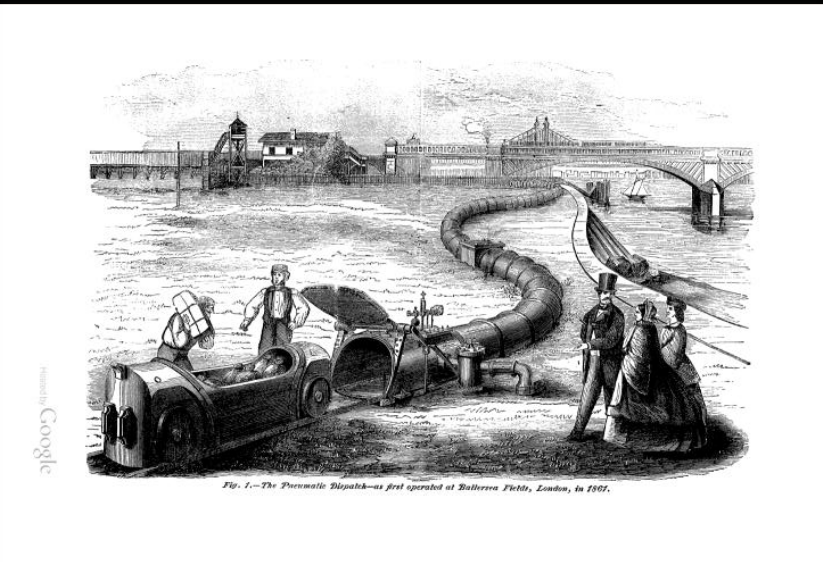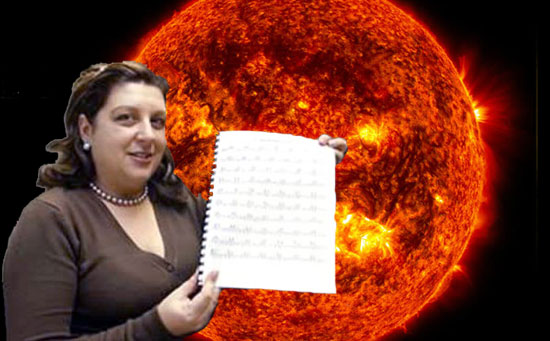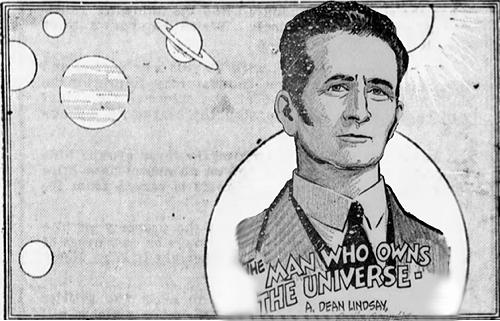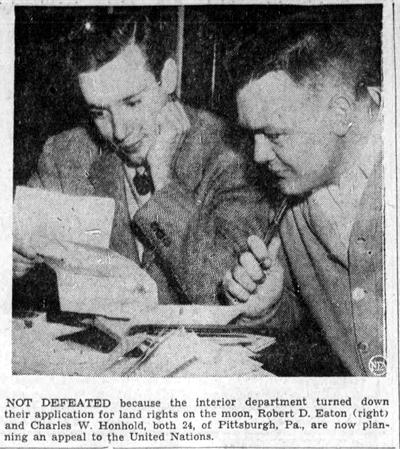September 2022
September 7, 2022
Lipstick-, Purse- and Shoe-Guns
Posted By: Paul - Wed Sep 07, 2022 -
Comments (2)
Category: Death, Fashion, Underwear, Inventions, Movies, Self-protection, Defenses, and Safeguards, Threats, Assaults and Intimidation
September 6, 2022
Face mask with simulated nose hairs
Uday Singh of Bloomfield, NJ was recently granted Patent No. 11413194 for a face mask with simulated nose hairs.The idea is that having openings protected by "filter material" (aka fake nose hairs) will solve the problem of mask fogging.
Singh refers to his invention as "an aesthetically pleasing covering for protecting otherwise exposed nasal and/or other facial surfaces." Based on the picture below, 'aesthetically pleasing' isn't the first term that comes to mind.

via Jeff Steck
Posted By: Alex - Tue Sep 06, 2022 -
Comments (2)
Category: Costumes and Masks, Patents
Follies of the Madmen #541

Posted By: Paul - Tue Sep 06, 2022 -
Comments (1)
Category: Advertising, Women, Weapons, Motorcycles
September 5, 2022
Using comic strips to forecast the stock market
Frederick N. Goldsmith published a successful stock-market newsletter from 1916 to 1948, when he came under investigation by the New York Attorney General for telling his subscribers that his market advice was based on "inside information."Goldsmith, however, had an unusual defense. He revealed that the primary source of his inside information was the comic strip "Bringing Up Father." Goldsmith believed that the comic strip provided clues, in code, about the direction of the market. The clues had been placed there by "big insiders." This was apparently their way of communicating with each other. But Goldsmith believed he had cracked the code. Details from The Manipulators (1966) by Leslie Gould:
In one episode, explained Goldsmith, Jiggs was at the theater and remarked: "The intermissions are the only good thing about this show." Goldsmith interpreted that as a sure-fire tip to buy Mission Oil, which he passed on to his market letter subscribers. It went up fifteen points the next day.
When questioned, McManus (author of the comic-strip) insisted he knew nothing about the stock market and pointed out that he prepared his strip nine weeks ahead of publication. He also noted, "What would I be doing with cartoons if I were so hot on the stock market?"
Having learned the truth, the AG could have dropped the case, but he decided to shut down Goldsmith anyway for misleading his subscribers.

NY Daily News - Nov 18, 1948
The problem that the AG faced at the trial, however, was that Goldsmith's predictions had actually been pretty good and had served his subscribers well. In fact, many of his subscribers came to his defense during the trial. Nevertheless, the judge shut down Goldsmith's business. More details from The Manipulators:
The defendant. . . was engaged in the business of writing and distributing a market letter to the public which attempted to forecast and predict future prices of securities and commodities.
Subscribers were led to believe that the defendant used statistics, financial reports and charts in preparing. . . prognostications of future price movements. The letter was also so worded as to imply that the defendant had sources of special and secret information concerning stock movements. . .
The subscribers to the defendant's daily market letter had the right to assume that the defendant possessed a superior knowledge of the stock market, that whatever information he had came from living persons and recognized sources and not as a result of interpretations of comic strips. When he failed to inform his subscribers of the alleged sources of information he was concealing a material fact.

Terre Haute Tribune - June 13, 1948
Posted By: Alex - Mon Sep 05, 2022 -
Comments (0)
Category: Money, Comics, 1940s
The Pneumatic Dispatch
A detailed plan for building underground air-propelled railways.Read the whole thing here.

Posted By: Paul - Mon Sep 05, 2022 -
Comments (1)
Category: Inventions, Trains and Other Vehicles on Rails, Nineteenth Century
September 4, 2022
Watch out for falling babies
While Joseph Figlock was walking down the street, minding his own business, he twice had a baby fall from an overhead window onto his head. It first happened in 1937, and then again in 1938.Bad luck for him, but good luck for the kids who landed on him.

Detroit Free Press - Sep 28, 1938
Posted By: Alex - Sun Sep 04, 2022 -
Comments (2)
Category: Babies, Synchronicity and Coincidence, 1930s
Sugar Rice Krinkles
You will of course detest the word "krinkles" by the end of this commercial, especially since it's pronounced "kuh-rinkles."
Posted By: Paul - Sun Sep 04, 2022 -
Comments (2)
Category: Clowns, Advertising, Cereal, 1960s
September 3, 2022
Picnic Jeans
An Italian design company, Aquacalda, came out with these in 2012.Note the cup holder on the side.
More info: delish.com


Posted By: Alex - Sat Sep 03, 2022 -
Comments (1)
Category: Denim
Here Come the Double-Deckers!
Wikipedia page.
Posted By: Paul - Sat Sep 03, 2022 -
Comments (1)
Category: Television, Unlikely, Improbable and Counterfactual Phenomena, Children, 1970s
September 2, 2022
A Brief History of the Extraterrestrial Real Estate Market
Note: I originally wrote this article for about.com, which has since ceased to exist. I recently came across it while going through my files. So I decided to repost it here.In 2013, Maria Angeles Duran began selling plots of land on eBay. That, in itself, wasn't unusual. However, the land she was selling was located on the sun. She offered square-meter plots for the price of 1 euro each. By 2015, she had over 600 buyers, but then eBay pulled the plug on her, saying her auctions violated its "intangible goods" policy.
Further complicating Duran's business plan was the fact that she was in no way a pioneer of solar real estate sales. Long before she came along, numerous other people had already staked a claim to the sun. In fact, for over 75 years there's been a booming market in real estate located throughout the entire universe, with the result that by now every corner of the cosmos has been claimed by multiple would-be owners.

Hot Property: Maria Angeles Duran wants to sell you land on the sun
The First Owner
If priority in this matter means anything (and it probably doesn't) then the entire universe, except for the Earth, is owned by Arthur Dean Lindsay and his descendants, since Lindsay appears to be the first guy who had the idea of laying claim to outer space. In 1937, he filed a deed at the Irwin County Courthouse in Ocilla, Georgia, declaring his ownership of "all of the property known as planets, islands-of-space or other matter." When he informed the press of this, he became widely known as the "man who owns the universe." However, these vast holdings didn't help his finances much. In 1937, it was reported that he was bankrupt.

Arthur Dean Lindsay — the man who owned the universe
Homesteading the Moon
In 1948, William Honhold and Robert Eaton of Sewickley, Pennsylvania got the idea of writing to the Bureau of Land Management to request "all rights and privileges to the moon" under the federal homestead act. Interior Secretary Krug actually took the time to respond, saying, "Sovereignty of the United States has never been established over the moon; consequently, land areas, if any, of that planet cannot at this time be regarded as subject to claims or applications under the federal public land laws." Honhold and Eaton planned an appeal to the United Nations.

Idaho Falls Post-Register - Apr 21, 1948
More in extended >>
Posted By: Alex - Fri Sep 02, 2022 -
Comments (6)
Category: Real Estate, Scams, Cons, Rip-offs, and General Larceny, Spaceflight, Astronautics, and Astronomy
| Get WU Posts by Email | |
|---|---|

| Who We Are |
|---|
| Alex Boese Alex is the creator and curator of the Museum of Hoaxes. He's also the author of various weird, non-fiction books such as Elephants on Acid. Paul Di Filippo Paul has been paid to put weird ideas into fictional form for over thirty years, in his career as a noted science fiction writer. He has recently begun blogging on many curious topics with three fellow writers at The Inferior 4+1. Chuck Shepherd Chuck is the purveyor of News of the Weird, the syndicated column which for decades has set the gold-standard for reporting on oddities and the bizarre. Our banner was drawn by the legendary underground cartoonist Rick Altergott. Contact Us |

